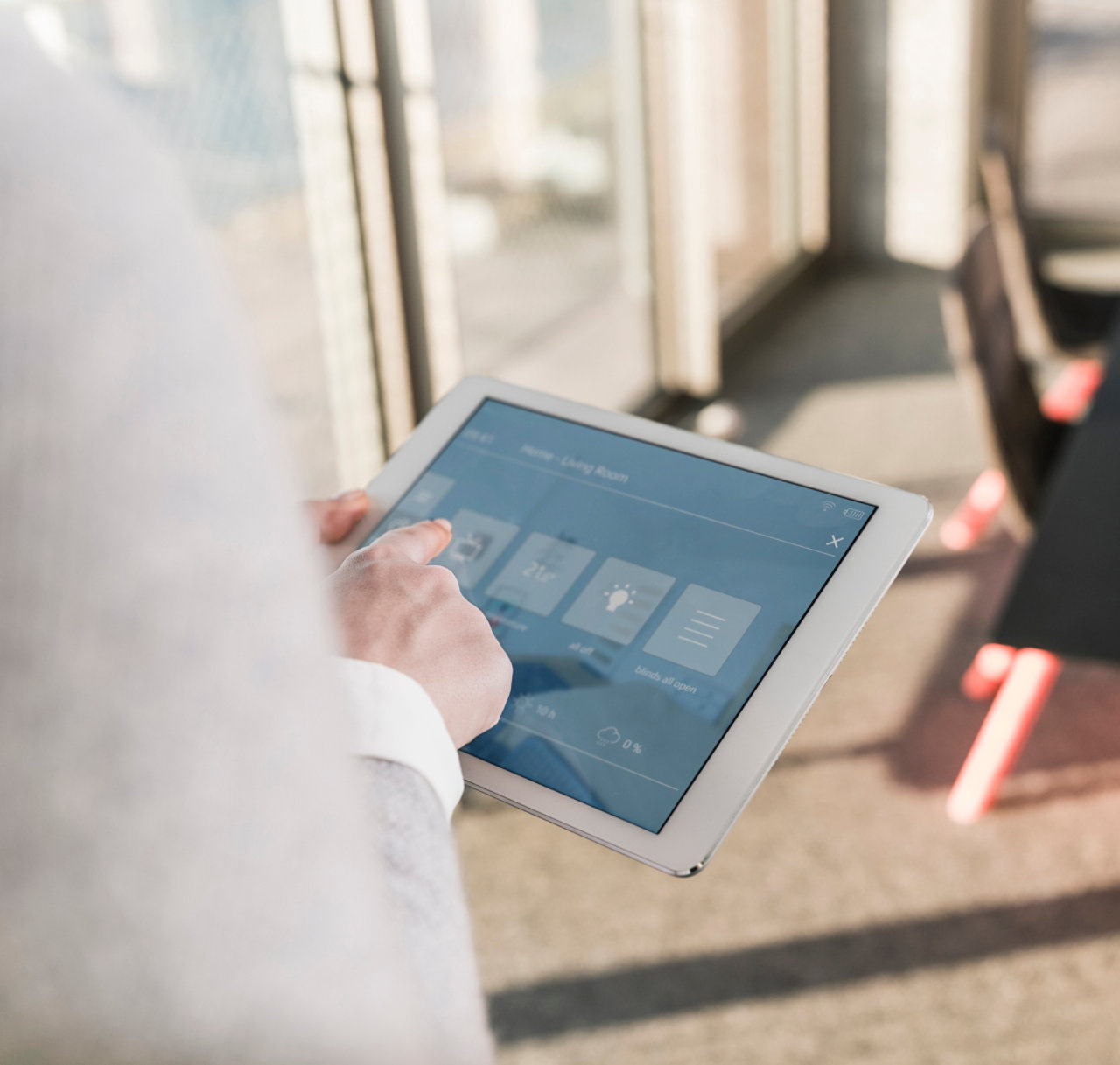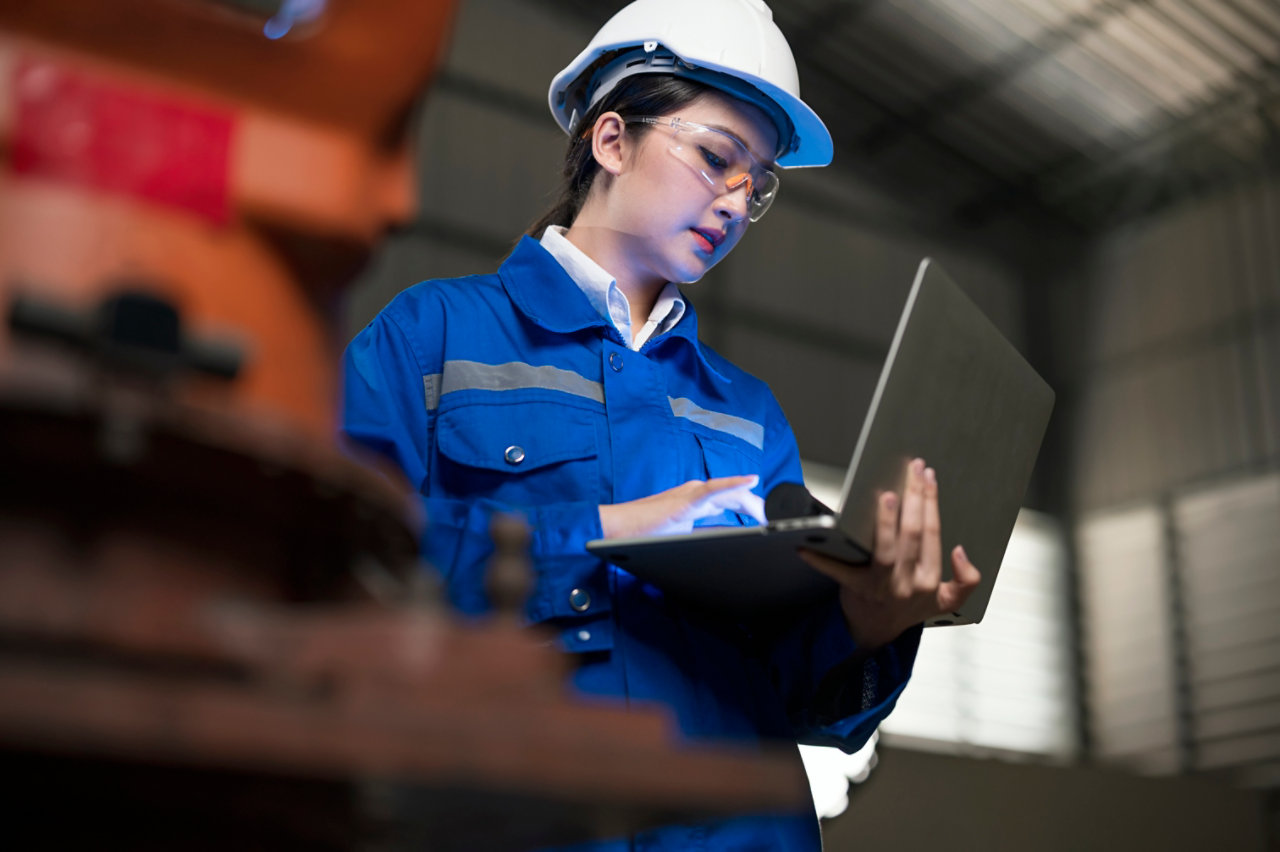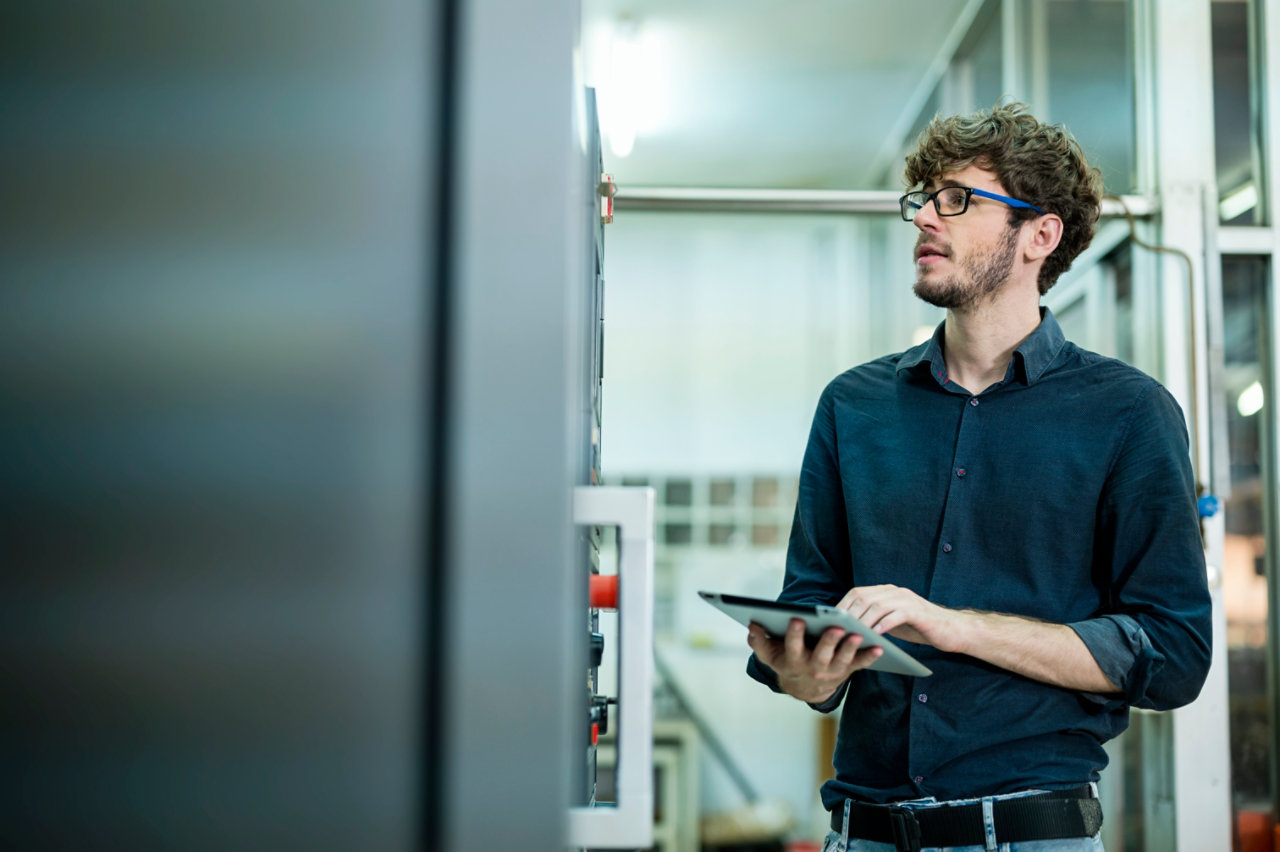What is the Internet of Things?
You’ve probably heard the term IoT. It stands for ‘Internet of Things’ and essentially refers to the billions of ‘smart’ devices that’re now connected to the internet. These devices can ‘talk’ to one another and collect and share real-time data – all without the involvement of a human being.
In our recent survey with YouGov, we surveyed more than 1,000 businesses to find out what they thought of the current techy trends and tools. But did you know only 34% had heard of IoT? Let’s dive in – and see what it could do for your company.
So, what exactly is an IoT device? People often think they’re just mobile phones or tablets, but actually, they extend into all areas of our lives. From printers to cameras, from connected vehicles to smart refrigerators; the list is endless. More and more consumer goods are coming to the market with an internet connection. And it’s almost impossible not to interact with at least one IoT device every single day. Things like smart thermostats, locks for smart homes, fitness trackers like Apple Watches and Fitbits, and personal home assistants are all used daily by many of us.
IoT’s widely considered as one of the key disruptive technologies – bringing along with it the ‘fourth industrial revolution’ – or Industry 4.0. The IoT market has exploded in the last few years and is predicted to keep growing quickly. It’s estimated there’ll be 31 billion connected devices by the end of 2020, and 75 billion devices by 2025 (Statista).
The history of IoT
It’s difficult to pinpoint when exactly IoT was first brought to life. While the term was first created in 1999 by Auto-ID Centre director Kevin Ashton, the technologies that gave rise to IoT date back much further.
Nikola Tesla famously dreamed of an interconnected future in 1926, in an interview with Colliers magazine:
“When wireless is perfectly applied the whole earth will be converted into a huge brain, which in fact it is, all things being particles of a real and rhythmic whole… and the instruments through which we shall be able to do this will be amazingly simple… a man will be able to carry one in his vest pocket.”
In 1966, German computer scientist Karl Steinbuch came even closer to imagining IoT when he stated; “In a few decades time, computers will be interwoven into almost every industrial product.”
He was correct. But it would still take a few decades, and the invention of the internet, before the world would see what’s often considered the first ‘IoT’ device. In 1990 a toaster was created that could be turned on and off using the internet. LG then announced plans for an internet connected fridge in 2000, and by 2004 ‘Internet of Things’ was being mentioned by mainstream publications across the globe.
Experts generally agree that IoT really blossomed sometime between 2008 and 2009 when the number of internet connected objects overtook the number of living people.
Fast-forward to 2021 and internet-connected ‘smart’ devices have become essential in almost every aspect of our lives. The 5G rollout, increasing global access to internet, cheaper components, and corporate and consumer interest are steadily increasing IoT’s growth.
IoT and business
IoT holds so many benefits for businesses. Digital transformation plans need to include IoT as it’ll help improve :
- Productivity and efficiency
- Data collection and sharing
- Customer behaviour insights
- Enabling remote workforces
A fifth of businesses in our survey already have IoT within their organisations. But we want everyone to benefit from the amazing prospects IoT holds.
Let’s take a look at each benefit in more detail.
Productivity and efficiency
Thanks to IoT, a lot of business processes have changed. Having such digital processes gives businesses new levels of efficiency, flexibility, and agility. Essential tasks can now be handled by connected devices, allowing employees to invest their time in more creative, intellectual work.
These tasks include things like:
- Data collection and processing
- Inventory tracking
- Supply chain management
- Employee management and scheduling
A Forbes Survey conducted in 2018 found that 37% of interviewed executives planned to deploy IoT in order to improve productivity and efficiency.
Data collection and sharing
IoT’s also transformed the way that businesses collect and share data. The huge number of connected devices now means businesses can collect and interpret data like never before. This in turn leads to valuable insights and lets companies make more informed decisions. These may include things like consumer behaviour and trends, employee efficiency, inventory levels, the operating state of machines, and how they’re used in the field.
The processing capabilities of these devices also means that data is processed at a much quicker and more efficient rate than by human employees.
New ways to understand the customer
Greater access to data means that businesses can gain new insights into how consumers are using their products and services. Once these insights have been collected, a business can provide a much more engaging and automated customer experience – giving them a competitive edge over other organisations, with an example being mobile apps, which can be used to shop online in a quick and easy way.
IoT automation can help customers cut down on time-intensive tasks. We now have printers that can automatically place orders when ink levels are low, and virtual assistants that can organise grocery deliveries with a single sentence.
By understanding how users are interacting with their products, and identifying opportunities for improvement, companies can better fulfil their needs to improve the customer experience.
Enabling remote workers
More and more businesses are choosing to embrace Managing remote teams: how to effectively manage your remote workers, and IoT plays a key role in letting this happen.
From healthcare to manufacturing, IoT lets workers do their normal job remotely, whether this be remote patient monitoring or device monitoring in manufacturing plants.
It’s also letting businesses deliver things that were usually done in person, such as staff training and educational content, over the internet.
Who's benefiting from IoT?
We mentioned earlier that IoT is considered a key player in the ‘fourth industrial revolution’ – also known as Industry 4.0. This technology, alongside robotics and AI, are set to transform businesses in terms of their operations and data collection. This ranges across all sectors – from healthcare to manufacturing, retail to agriculture. But in our survey, only 11% of businesses said they’re planning on adopting IoT over the next five years. But you can make a difference – and see the benefits for yourself today.
IoT in manufacturing
IoT is one of the main technologies driving digital transformation in manufacturing and has a key role to play in Industry 4.0. From improving workplace safety, to the quality of the end-product, it provides companies with the tools they need to rebuild and modernise their supply chains.
According to PwC, 90% of manufacturers believe that digitising their production processes will reap more long-term benefits than it will risks. These benefits include:
- Improvements to workplace safety
- Boosting employee productivity and efficiency
- Improving inventory tracking and management
- More effectively managing facilities and equipment
- Optimising supply chains and packing processes
- Increasing quality control
IoT has unlocked insights and opportunities for all stages of manufacturing that were previously impossible to access – meaning it’s one of the best industries to showcase IoT’s transformative potential.
IoT in healthcare
The medical sector is also experiencing an IoT revolution. From remote patient monitoring (helping underprivileged populations access vital services), to smart medical devices - including inhalers and hearing aids; healthcare is where we can see IoT’s potential to change lives for the better.
Connected devices like smart watches and fitness bands give patients the ability to keep track of exercise, blood pressure, diet, and more. Healthcare workers can then access this data remotely to monitor their patients’ health more effectively.
IoT devices are also extremely useful for hospital management and are used to perform tasks like real-time equipment tracking and inventory control.
Other innovations include hospital operations management, robotic surgeries, and ingestible sensors.
IoT in retail
IoT has the potential to be a game changer for the retail sector, providing physical stores with the tools they need to compete in an online-first world.
IoT devices have intelligent sensors that can help reduce inventory errors, optimise supply chain management and store layouts, remove wasted expenses and labour costs, and provide retailers with customer behaviour insights to provide innovative experiences. And all this through IoT devices sharing data in a way that improves these processes in real time.
Imagine a scenario: you walk into a shop to buy a t-shirt you’ve seen online and are shown a map on your smart phone pointing to where you can find it. You put it in your bag and leave the store. The item is scanned by sensors at the door so a payment can be deducted via your payment app. The sensors have also notified the back-end inventory system, so it knows to update stock.
This is just one example of how IoT can be used to create a seamless shopping experience - providing an efficient service for both customer and retailer. Fewer staff interactions mean lower labour costs, an automated inventory system leaves little room for human error, and a positive and time-saving customer experience increases the likelihood of them returning to the store.
And that’s not all. IoT has the potential to bring
- In-store layout optimisation and smart shelves
- Automated (robot) employees
- Personalised discounts for individual customers
- Optimised supply chain management
IoT and agriculture
IoT has an important role to play in the field of agriculture.
‘Smart farming’ has seen the adoption of new technologies to help produce food cleanly and sustainably while improving the quality and output.
One key element of this is precision farming – essentially anything that helps make farming more controlled and efficient for optimised output. Precision farming relies on the use of internet connected devices such as sensors, control systems, robotics, and autonomous vehicles - all of which fall under the Internet of Things. These can then have an impact in many different forms. From understanding when produce is ready to be picked, to the devices which can actually do the picking for you. And it’s not just the picking. IoT robots can analyse and tend to the crops, monitoring each plant’s health and spray them with the exact amount of pesticide needed. All of the information gathered by the devices can to save time and labour, with yield increasing and more accurate forecasting. Other innovate IoT devices deployed by the agriculture sector include:
- Automated irrigation systems
- Sophisticated field environment monitors
- Agricultural drones
- Smart greenhouses
IoT risks
There are so many benefits to IoT. But, it doesn’t come free of risk.
As a rule, the more IoT devices you have, the more sensitive data there is. And this confidential data could be accessed maliciously.
Connected devices can be used by hackers, governments, and businesses alike to access the personal information of individuals and organisations. Unsecured connected devices have been targeted in the past against businesses.
It’s so important to have a strong cyber security strategy to tackle any potential issues – and it needs to include plans for any connected IoT devices. It needs to cover the basics, like making sure all smart devices stick to password protocols and keeping them up to date with the latest manufacturer software patches.
The main goal of the Internet of Things is to make everyday tasks more efficient and innovative. While they have great potential in businesses’ digital transformation journeys, make sure you know the risks and put plans in place to avoid them.
Want to find out more? Take a look at our BT Insights hub. There’s loads more info on the latest tech, trends and talent. Dive in.




